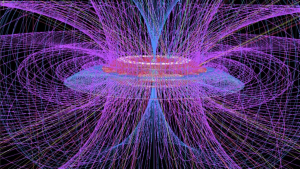
What is Geophysics?
Geophysics encompasses a diverse array of sub-disciplines, each focusing on different aspects of the Earth. It involves the exploration of the Earth’s structure, composition, and dynamics, employing techniques ranging from seismic imaging to magnetic and gravitational surveys.
Importance of Geophysics in Earth Sciences
The insights gained from geophysical studies are indispensable for addressing critical challenges such as natural resource exploration, environmental monitoring, and hazard mitigation. By deciphering the complex interplay of geological forces, geophysicists contribute to our understanding of Earth’s past, present, and future.
History of Geophysics

The roots of geophysics trace back to ancient civilizations, where early astronomers and philosophers pondered the nature of the Earth and its place in the cosmos. Over the centuries, advancements in mathematics and technology propelled the field forward, leading to groundbreaking discoveries and innovations.
Early Developments
Ancient civilizations, the Greeks and Chinese, made significant contributions to early geophysical knowledge through observations of celestial phenomena and seismic activity. it wasn’t until the 20th century that geophysics emerged distinct scientific discipline.
Major Milestones
The 20th century witnessed a surge in geophysical exploration, driven by technological advancements such as seismographs, gravimeters, and magnetometers. Milestones include the development of plate tectonics theory, the mapping of Earth’s magnetic field, and the advent of satellite-based remote sensing techniques.
Methods and Techniques in Geophysics
Geophysicists employ a wide range of methods and techniques to probe the Earth’s interior and surface processes. These methods utilize various physical principles to gather data and infer subsurface structures.
Seismology
Seismology, the study of seismic waves generated by earthquakes and other sources, provides valuable insights into the Earth’s internal structure and seismic activity. By analyzing the propagation of seismic waves, geophysicists can map subsurface features such as fault lines, magma chambers, and rock layers.
Gravity and Magnetic Methods
Gravity and magnetic surveys measure variations in gravitational and magnetic fields to delineate subsurface structures and geological features. These methods are particularly useful for mapping the distribution of density and magnetization within the Earth’s crust.
Electrical and Electromagnetic Methods

Electrical and electromagnetic surveys involve sending electrical currents or electromagnetic waves into the ground and measuring their response. Variations in electrical conductivity and electromagnetic properties can indicate the presence of minerals, groundwater, or hydrocarbon reservoirs.
The versatility of geophysical techniques makes them indispensable tools in various fields of study and industry sectors.
Oil and Gas Exploration
Geophysics plays a crucial role in locating underground oil and gas reservoirs by identifying structural traps and delineating reservoir boundaries. Seismic imaging and electromagnetic surveys are commonly used to image subsurface geology and assess resource potential.
Mineral Exploration
In mineral exploration, geophysical methods help identify ore deposits by detecting anomalies in physical properties such as density, magnetism, and conductivity. Geophysical surveys can cover large areas cost-effectively, guiding exploration efforts and reducing the risk of exploration failure.
Environmental Studies
Geophysical techniques widely used in environmental studies to assess groundwater resources, monitor pollution, and characterize subsurface geology. Geophysicists contribute to environmental remediation efforts by mapping contaminated sites and monitoring the migration of pollutants.
Archaeology
In archaeology, geophysics aids in non-invasive mapping of ancient structures and buried artifacts. Ground-penetrating radar, magnetometry, and electrical resistivity imaging commonly used to survey archaeological sites and uncover hidden features beneath the surface.
Understanding Earth’s Interior
Perhaps most fundamentally, geophysics provides insights into the composition and dynamics of Earth’s interior, including the structure of the mantle, core, and lithosphere. By studying seismic waves and other geophysical signals, scientists can infer the properties of materials at depths inaccessible to direct observation.
Challenges and Limitations
Despite its many successes, geophysics faces several challenges and limitations that can hinder the accuracy and reliability of its findings.
Interpretation Challenges
Interpreting geophysical data often requires sophisticated mathematical models and computational techniques, which may introduce uncertainties and ambiguities. Geophysicists must carefully validate their interpretations and account for factors such as data resolution, noise, and geological complexity.
Environmental Constraints
Some environments, such as urban areas or regions with dense vegetation, pose challenges for geophysical surveys due to limited access and signal interference. Developing methods for conducting surveys in challenging environments is an ongoing area of research in geophysics.
Technological Limitations
Despite advances in instrumentation and data processing, geophysical methods have inherent limitations in resolution, depth penetration, and spatial coverage. Continued innovation is needed to overcome these limitations and push the boundaries of exploration.
Future Prospects of Geophysics
Looking ahead, geophysics is poised for further advancements driven by rapid technological development and interdisciplinary collaboration.
Technological Advancements
Emerging technologies such as distributed sensor networks, advanced imaging algorithms, and machine learning hold promise for enhancing the resolution and accuracy of geophysical surveys. These innovations will enable geophysicists to explore deeper and with greater precision than ever before.
Exploration of Other Planets
Geophysical techniques developed for Earth exploration are increasingly adapted for planetary exploration missions. Geophysicists are involved in studying the internal structure and geological processes of other planets and moons, shedding light on their evolution and potential for habitability.
Climate Change Studies

Geophysical methods play a crucial role in monitoring and understanding the impacts of climate change on Earth’s systems. By studying changes in the cryosphere, biosphere, and atmosphere, geophysicists contribute valuable data for climate models and mitigation strategies.
Conclusion
In conclusion, geophysics serves as a gateway to unraveling the mysteries of our , from its dynamic surface processes to the depths of its core. Through a combination of innovative methods, interdisciplinary collaboration, and sheer curiosity, geophysicists continue to push the boundaries of knowledge and pave the way for a deeper understanding of Earth and beyond.
Unique FAQs
Is geophysics only applicable to Earth studies?
Geophysics primarily focuses on Earth studies, but its principles and techniques can applied to other planetary bodies as well.
How do geophysicists distinguish between different types of seismic waves?
Seismic waves exhibit different behaviors based on their propagation speed and mode of transmission, allowing geophysicists to differentiate between primary (P-waves) and secondary (S-waves) waves, among others.
What role does geophysics play in disaster risk reduction?
Geophysics helps identify potential hazards such as earthquakes, volcanic eruptions, and landslides, enabling communities to prepare for and mitigate the impacts of natural disasters.
Can geophysical methods detect underground water sources?
Yes, geophysical surveys can detect variations in subsurface properties associated with aquifers and groundwater reservoirs, aiding in the exploration and management of water resources.
How geophysical data integrated with other Earth sciences?
Geophysical data often integrated with geological, geochemical, and geospatial data to provide a comprehensive understanding of Earth’s processes and phenomena, facilitating interdisciplinary research and analysis.









